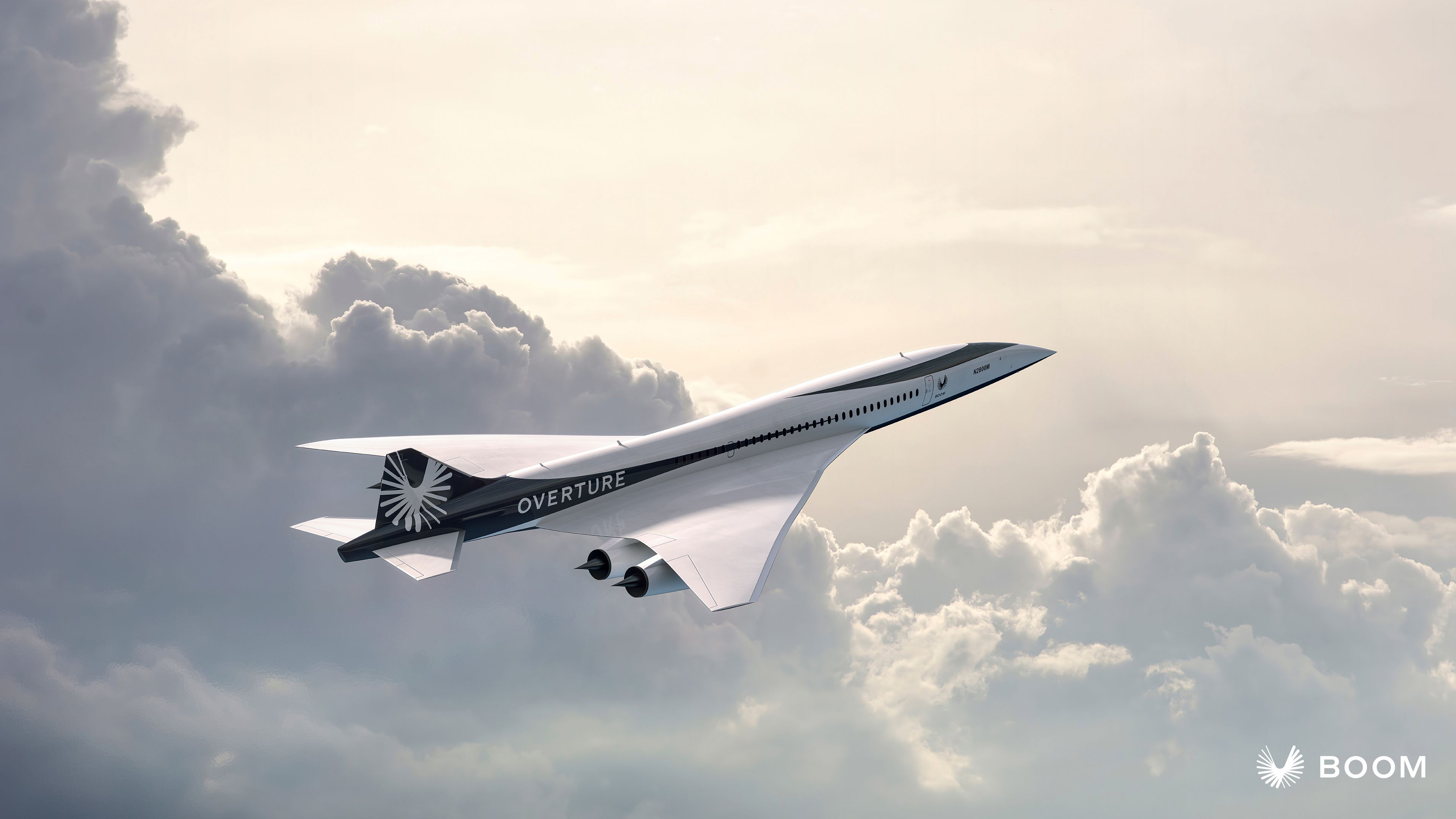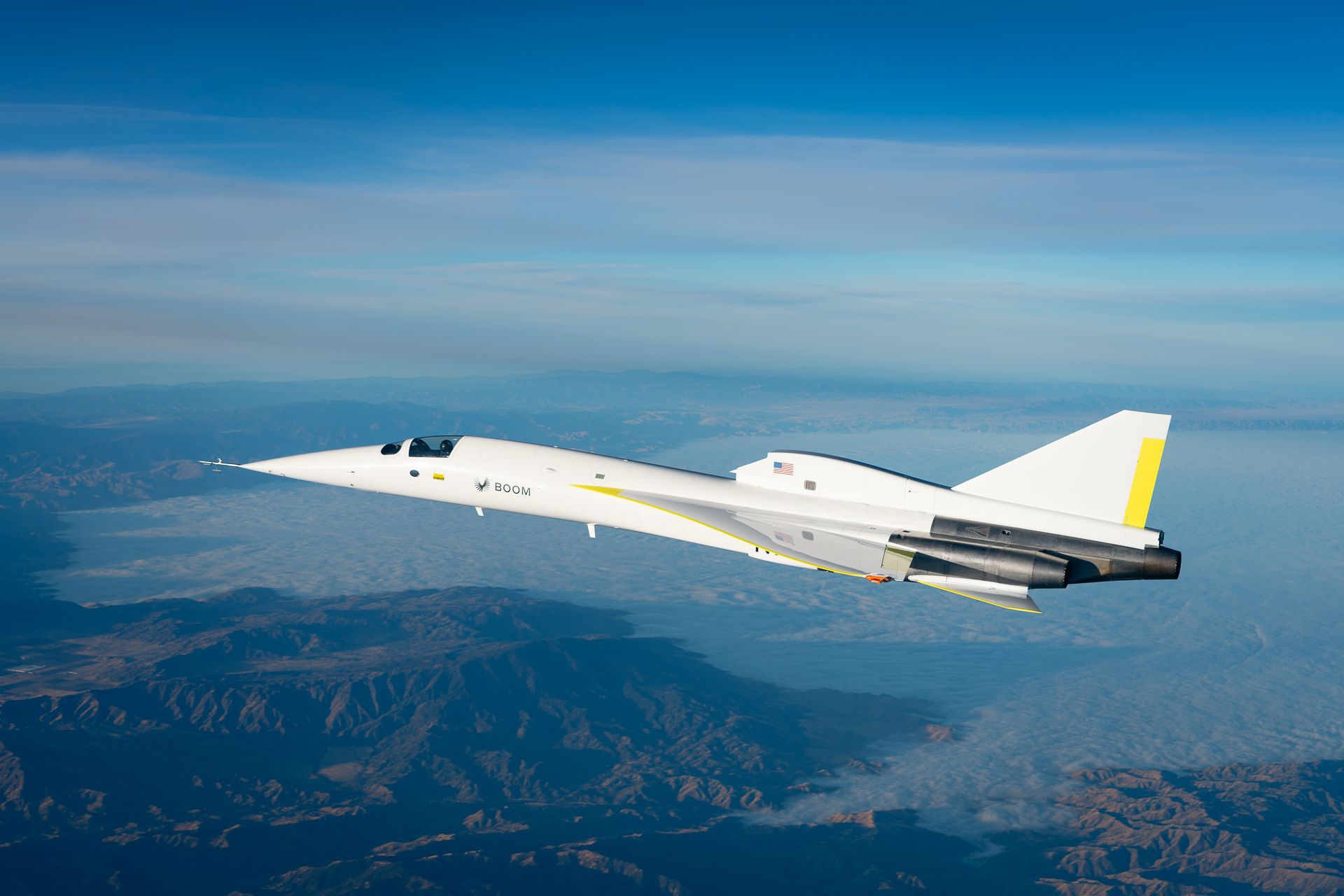There have been only two major examples of commercial supersonic jets in aviation: the Aérospatiale/British Aerospace Concorde and the Tupolev Tu-144. Both aircraft, though popular among travelers, failed to be commercially successful due to their operating costs and enormous environmental impact. Aircraft manufacturers are eager to revive supersonic jet travel, particularly in the private aviation sector.
Supersonic business jets (SSBJ)
A number of companies worldwide have been working on the design and development of supersonic business jets (SSBJ). These jets are intended to transport 5-10 passengers at speeds exceeding the speed of sound. While the SSBJs are intended to be the same size as subsonic business jets, the design and operational capabilities have to be significantly different than those of their subsonic counterparts.
Photo: Boom Supersonic
Would supersonic business jets completely transform private aviation? Are they the future of luxury air travel? Despite many recent advancements in supersonic private jets, it is still too early to say if those jets can prove to be economically and environmentally viable in this day and age. Although fast and luxurious is a common desire for private jets, a balance of safety, operational viability, and environmental impact has to be kept.
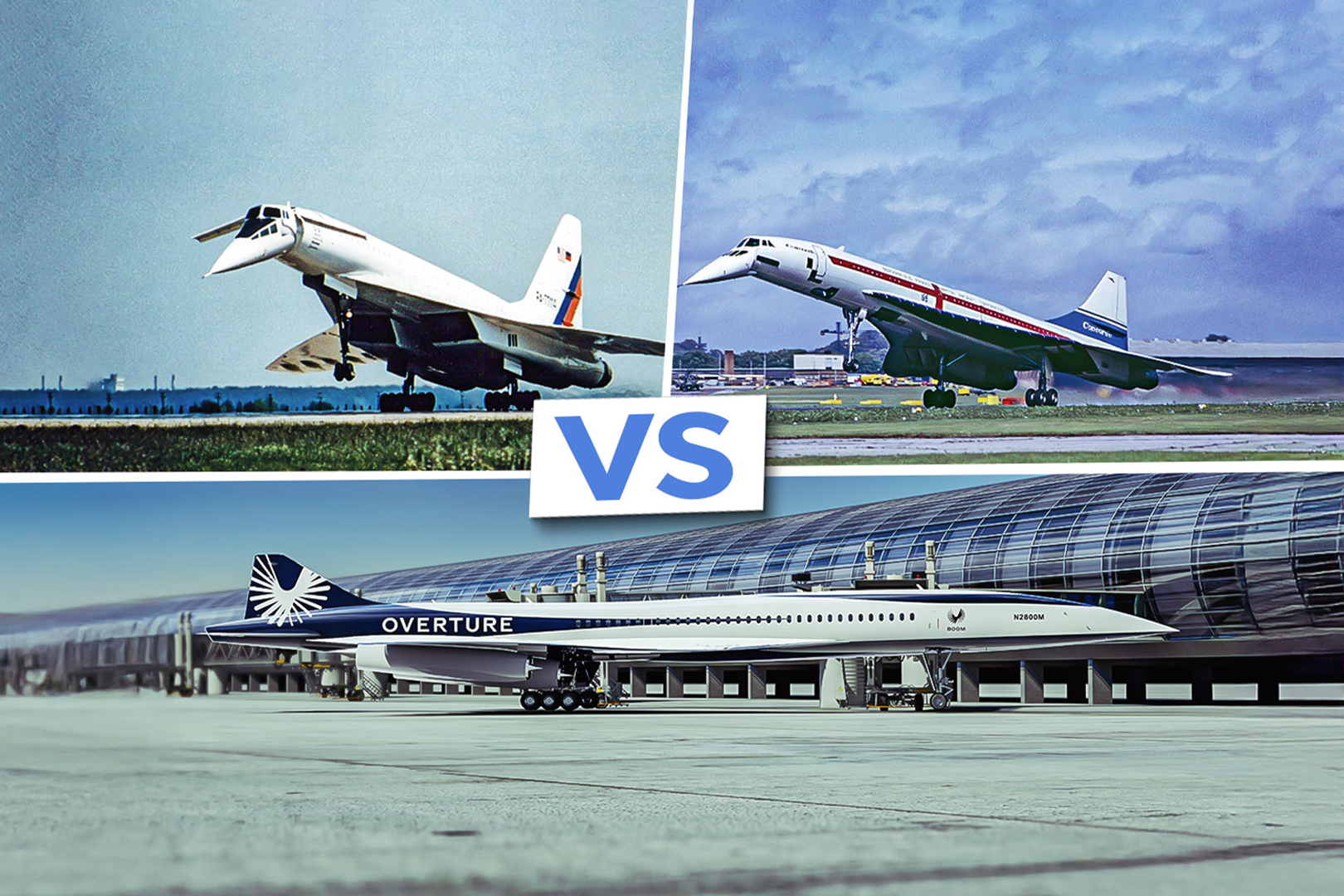
Related
Boom Vs Concorde Vs Tupolev: Supersonic Passenger Jets Compared
Both blazed a supersonic trail that Boom’s Overture now aims to surpass, but how do they compare?
Virgin Galactic high-speed jet concept
In 2020, Virgin Galactic unveiled a Mach 3 aircraft design for high-speed air travel. The design parameters of the supersonic aircraft include a Mach 3-certified delta wing design capable of cruising at high altitudes of approximately 60,000 ft. The aircraft would have a capacity for 9 to 19 people, offering custom cabin layouts and luxurious seating for optimal passenger comfort.
These features are equivalent to those in today’s modern (subsonic) aircraft, with the added advantage of supersonic speeds. The aircraft will be capable of sustainable aviation fuel, allowing minimal environmental impact due to its relatively higher fuel consumption and noise. Besides Virgin Galactic, a range of manufacturers are making use of sustainable technologies to baseline their respective supersonic jets.
The company is collaborating with Rolls-Royce in designing and developing the propulsion system for the new supersonic private jet concept aircraft. The first-stage design scope outlined the high-speed nature of the aircraft and its potential capabilities.
The company is focusing on customer experience and environmental sustainability as part of its commitment to the program and its industry and government stakeholders. After the Mission Concept Review, the Chief Space Officer of Virgin Galactic, George Whitesides, commented,
“We are excited to complete the Mission Concept Review and unveil this initial design concept of a high speed aircraft, which we envision as blending safe and reliable commercial travel with an unrivaled customer experience. We are pleased to collaborate with the innovative team at Rolls-Royce as we strive to develop sustainable, cutting-edge propulsion systems for the aircraft, and we are pleased to be working with the FAA to ensure our designs can make a practical impact from the start. We have made great progress so far, and we look forward to opening up a new frontier in high speed travel.”
The propulsion aspect of the design is highly challenging, particularly when environmental viability has to be at the forefront of the project. Tom Bell, the North American chairman and CEO of Rolls-Royce, expressed his excitement about the partnership on what could be the future of private jet travel by stating,
“We are excited to partner with Virgin Galactic and TSC to explore the future of sustainable high speed flight. Rolls-Royce brings a unique history in high speed propulsion, going back to the Concorde, and offers world-class technical capabilities to develop and field the advanced propulsion systems needed to power commercially available high-Mach travel”
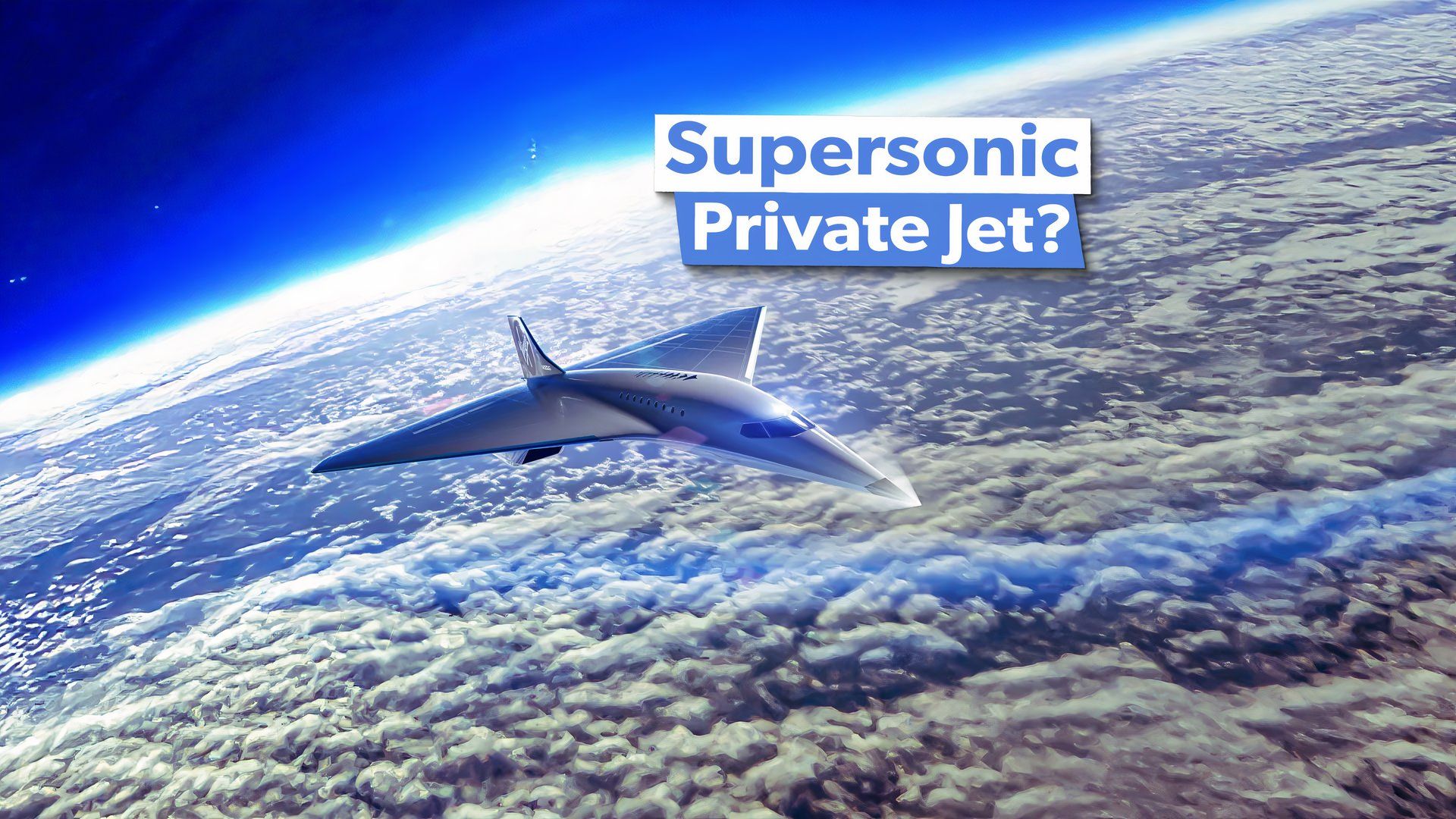
Related
The Concorde Of Private Aviation: Virgin Galactic’s Private Jet
Is the Virgin Galactic Private Jet the new Concorde?
Boom Technology Boom XB-1
- Crew: One (design allows for a second seat)
- Length: 62.6 ft (19.1 m)
- Wingspan: 21 ft (6.4 m)
- Height: 17 ft (5.2 m)
- Max takeoff weight: 13,500 lb (6,123 kg)
- Powerplant: 3 × GE J85-15 afterburning turbojet, 2,925 lbf (13.01 kN) thrust each dry, 4,300 lbf (19 kN) with afterburner
- Maximum speed: Mach 2.2
- Range: 1,000 NM (1,200 mi, 1,900 km)
United States-based manufacturer Boom Technology has developed a one-third-scale trijet supersonic demonstrator aircraft for the transport of passengers. The aircraft dubbed “Baby Boom” is designed as part of the development of Boom Overture, a 65-80 passenger supersonic jet concept. The Boom Xb-1 would be powered by three General Electric J85 engines, which would enable the aircraft to reach and maintain Mach 2.2 speeds. With an intended operational range of 1,000 nautical miles (1,900 km;1,200 mi), the demonstrator aircraft was tested to only Mach 1.1.
Boom Technology began ground testing of the aircraft in December 2022. Following a comprehensive taxi test campaign, the aircraft performed its maiden flight on January 28, 2025. The aircraft became the first privately developed jet aircraft to achieve the flight. According to Blake Scholl, founder and CEO of Boom Technology,
“XB-1’s supersonic flight demonstrates that the technology for passenger supersonic flight has arrived. A small band of talented and dedicated engineers has accomplished what previously took governments and billions of dollars. Next, we are scaling up the technology on XB-1 for the Overture supersonic airliner. Our ultimate goal is to bring the benefits of supersonic flight to everyone.”
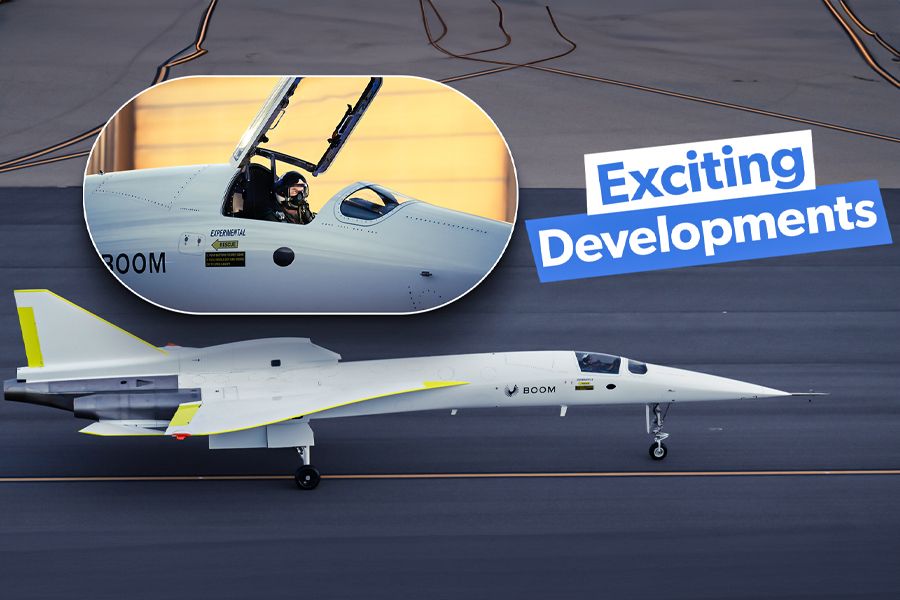
Related
Analysis: What The Boom XB-1’s Supersonic Flight Authorization Means For Aviation
The XB-1 is paving the way for supersonic commercial air travel to become a reality once again, more than 20 years after Concorde’s retirement.
The first civilian supersonic jet
- The pointed nose of a supersonic jet minimizes shock waves.
- Lesses air is compressed around the aircraft.
- The slender body reduces drag.
- The aerodynamic shape improves its flight efficiency.
- The wings are swept back to reduce drag and increase lift.
Boom Technology designed, developed, and flew the first civilian supersonic jet since Concorde. It is set to scale the aircraft to deliver supersonic travel with Overture, cutting travel times in half. This milestone is significant in achieving supersonic flight in private aviation and changing how private jet travel is currently done. The Boom XB-1 made a second supersonic flight on February 10, 2025, before it was retired.
Captain Mike Bannister, who was a former chief Concorde pilot for British Airways, states his enthusiasm about the future of supersonic commercial air travel, signifying the luxury of private jet travel with double the speed by stating,
“I’ve been waiting over 20 years for an environmentally friendly successor to Concorde and XB-1’s supersonic flight is a major landmark towards my dreams being realized. When I last flew Concorde in 2003 I knew that this day would come.”
Photo: Boom Supersonic
“The supersonic flight of the XB-1 supersonic demonstrator is a significant achievement toward making sustainable supersonic flight a reality, aboard Overture—my #1 choice as the successor to Concorde. I’m now looking forward to the next big step— the first running of the core of Boom’s ‘Symphony’ engine later this year.”
Congratulations to Blake Scholl, all at Boom and especially its pilot, Tristan ‘Geppetto’ Brandenburg. Having been Concorde’s Chief Pilot I envy his role in this exciting return towards mainstream supersonic flight.”
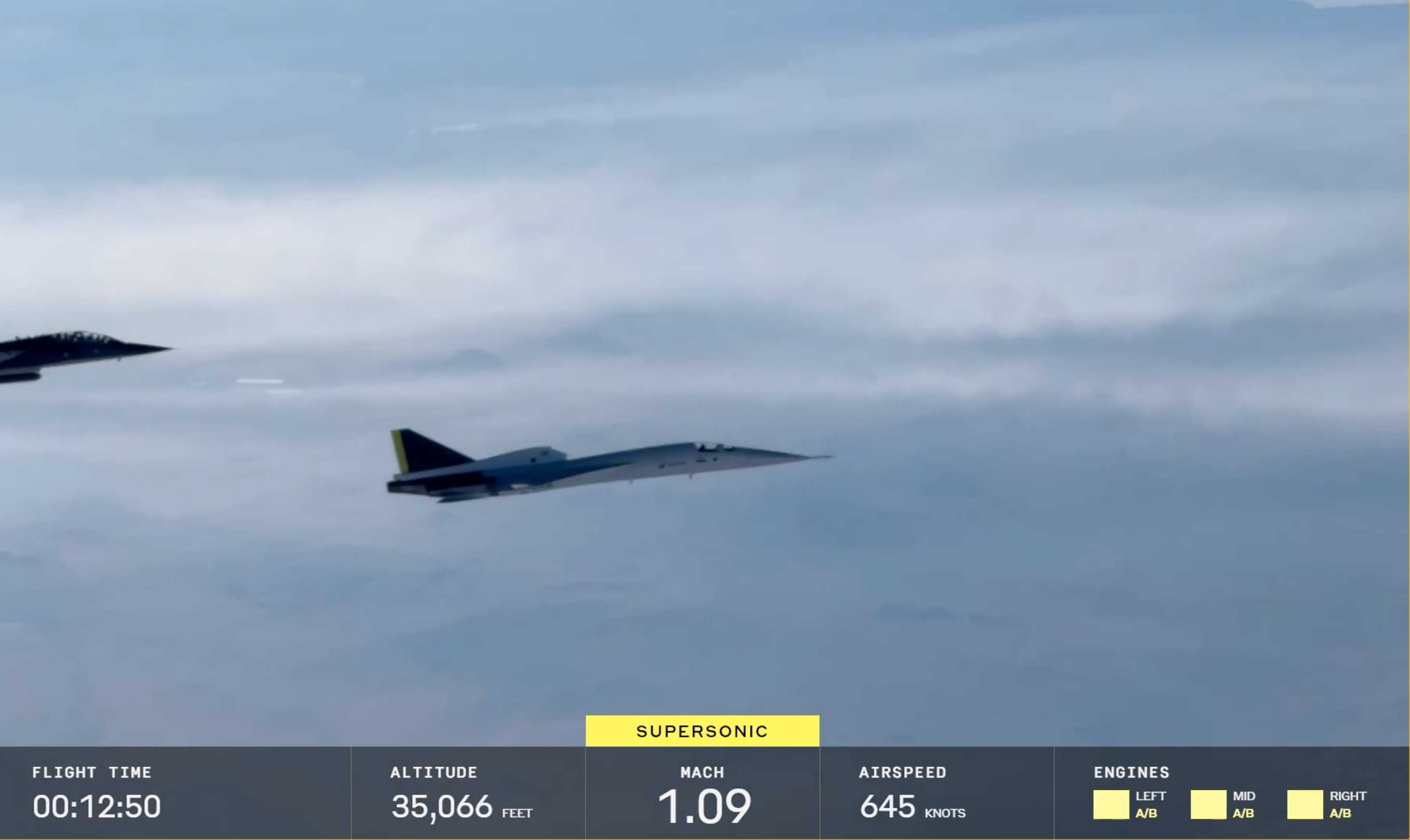
Related
Boom Supersonic XB-1 Just Broke Mach 1 In Test Flight. What Does This Mean For Aviation?
Boom Supersonic just completed a test flight of their XB-1 aircraft over the Mojave desert, achieving above Mach 1 speeds during a test flight. (breaking the sound barrier) While we’ve seen the Concorde come and go from commercial aviation fleets and flight schedules, do you think this signals a return to that era? Will there finally be a market for supersonic flights? Also, when might this actually reach airline and aircraft leasing customers’ hands?


